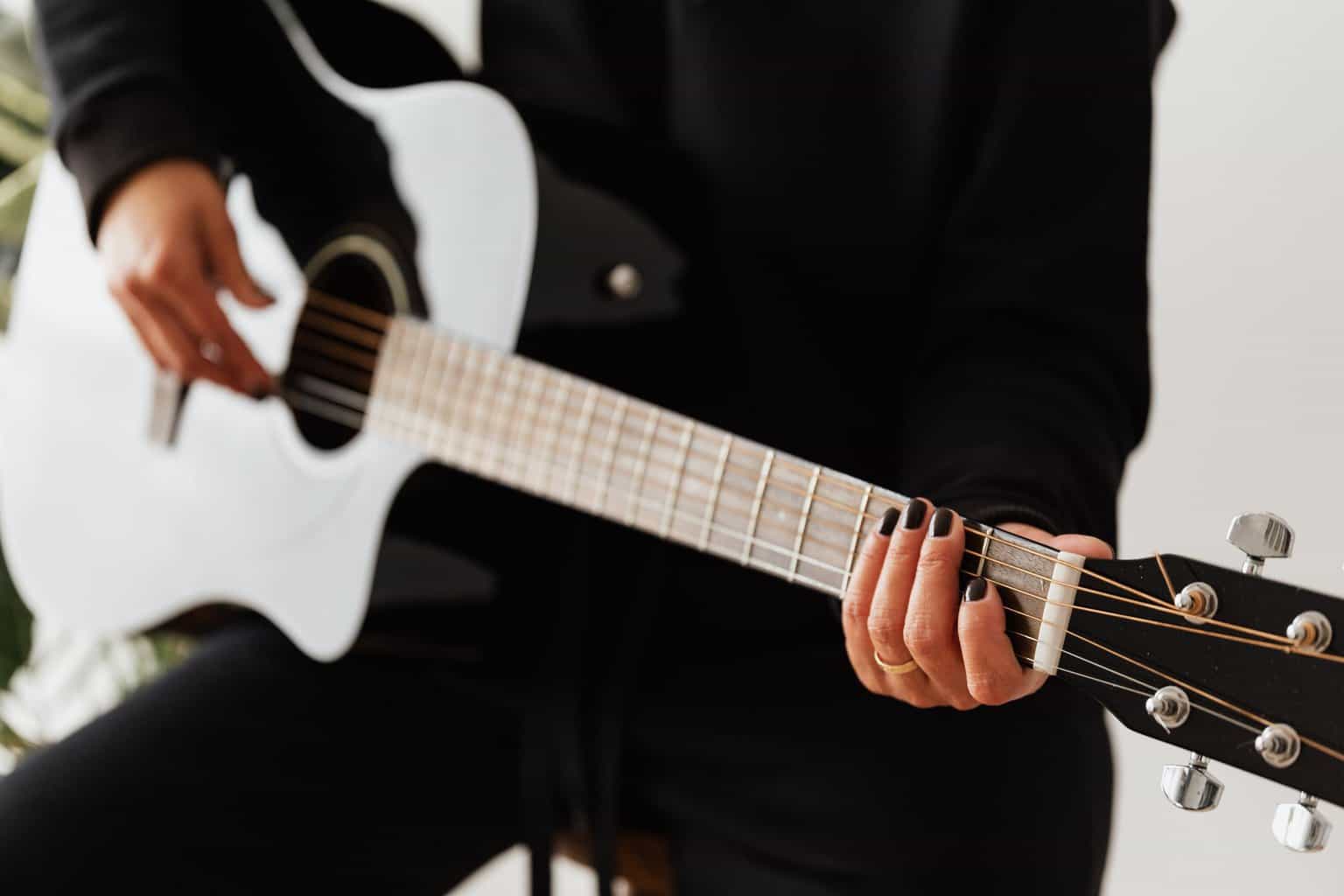When you start playing a stringed instrument such as guitar or bass you may notice some changes in your fingers and hands.
At first, it can be a headache because of the pain you suffer but some time later you will get over that.
But what are those changes?
Well, apart from the well-known guitar callouses your fingers may undercome different processes, maybe because of the stretching or perhaps due to the exerted pressure.
So, does playing guitar change your finger’s shape?
Playing guitar can change the shape of your finger, although not in a very noticeable way. The strength and speed required to play will make you build muscle, elasticity, and dexterity. Those factors could make your fingers look or feel slightly thicker or longer, but callouses are the most noticeable change.
Let’s dig deeper into this topic and discuss the various aspects that may influence your fingers to change.
I will try to give you the whole landscape about it, how your fingers are affected in terms of shape, how your nails influence your playing, or even if other parts of your body could change.
Does playing guitar make your fingers longer?
This is a really tough question to answer, mainly because there isn’t a lot of research done about it.
Some people claim that your fingers can’t become longer at all.
However, some others state that if you have played guitar for several years you should notice the difference in your fretting hand.
Is not just a visual difference, it has to do with how your fingers stretch in comparison to your picking hand.
Does playing guitar make your fingers thicker?
First learners tend to suffer at the beginning, at least for the first months.
That is because our fingers are naturally weak and to play guitar you need to exert pressure on the frets.
To apply the pressure required to produce the tone on the strings, you need strength in your fingers.
That’s why we can say that playing guitar makes your fingers thicker, by applying that strength you will develop muscle in them.
Playing guitar will generate callouses on your fingers
Guitar callouses are thick pads of skin that appear on the guitarist’s fingertips from the fretting hand due to the constant manipulation of the strings.
What this hardy part does is protect your fingers.
The process of developing callouses could be painful but it won’t last very long.
At first, you will feel soreness due to your fingers are not strong enough and then, callouses will appear.
When this happens, I recommend you to stop playing for some days.
After that, callouses will go away and you will develop thicker skin in your fingertips.
Don’t worry if they hurt or look ugly, is part of the process.
It could seem horrible but it is something that every guitar or bass player needs to go through and there are no shortcuts.
Playing guitar will improve your finger coordination
Having the skill of moving your fingers smoothly is something that a guitarist really needs to play guitar properly.
Furthermore, if you learn to play guitar you will develop better finger coordination.
As you progress playing the guitar, you build your finger dexterity, which will also improve your finger coordination and your accuracy will be reinforced as well.
However, these abilities won’t be so useful in other aspects apart from playing guitar.
Playing guitar will give you a stronger grip
The strength you apply with your fingers to play an instrument is called grip.
As mentioned previously about finger coordination, guitar grip is also a relevant aspect of playing.
That is because the way you grip and hold your instrument truly affects your playing.
You have to bear in mind that muscle development might improve your grip and stamina.
Some players claim that overly training grip will make you lose dexterity in your hands but let me tell you that is pretty far from reality.
Grip training couldn’t influence your playing badly, it will make you reach some difficult chords shapes easily and fly across the fretboard, instead.
Playing guitar will require you to clip your nails often
Fingerstyle players often grow out their fingernails from their picking hand to pluck and use them as if they were individual picks.
This is common among acoustic or classical guitar players but, on the fretting hand, occurs quite the opposite no matter the style or kind of guitar they play.
Guitarists tend to keep their fretting hand fingernails short mainly because long fingernails will prevent them to fret notes properly.
As you fret strings with your fingertips, it would be a really hard task to do if you have your nails really long.
Does playing guitar change the shape of any other parts of your body?
Playing guitar might affect some other parts of your body but only after many years of doing it, is not something that will happen after a couple of months of playing.
However, some players haven’t experienced any change in their bodies despite having played for a long time.
Some players state that the weight of the instrument hanging from their shoulder on its strap has lowered their shoulders a bit.
In addition, keeping rhythm always with the same foot through the years could develop more muscle on that leg.
Another interesting change that might be experienced is developing callouses along the side part of the index finger from the fretting hand.
This may occur mostly in classical guitar players due to the excessive pressure they need to exert when playing bare chords.
Conclusion
In conclusion, playing guitar will make you modify some habits and because of that, you may experience different changes in your body, mostly in your hands and fingers.
This is because this instrument involves moving your fingers in ways that are not natural for our organism.
As with everything in life, the only thing you need to do to get accustomed is practice.
Try to build up your callouses from the very beginning and develop your dexterity, doing that you will instantly notice how comfortable you feel playing the guitar.

Hello there, my name is Ramiro and I’ve been playing guitar for almost 20 years. I’m obsessed with everything gear-related and I thought it might be worth sharing it. From guitars, pedals, amps, and synths to studio gear and production tips, I hope you find what I post here useful, and I’ll try my best to keep it entertaining also.





